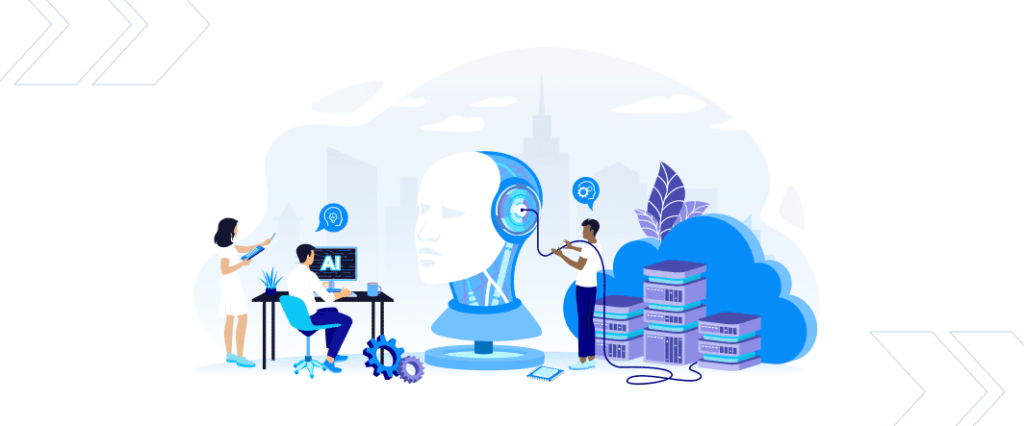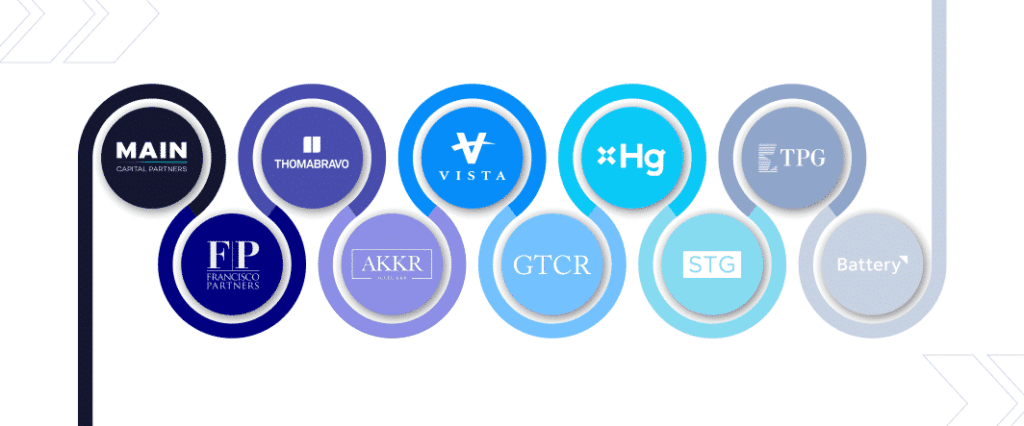- Company
Featured Resource
CLIENT STORYModern Message
To Real Estate
Giant RealPage
- Sectors
Featured Industry Report
EXPERT SERIESManufacturing Software
Report – Part 2
- Research
Featured Resource
FEATURED REPORTThe SEG 2024
Annual SaaS Report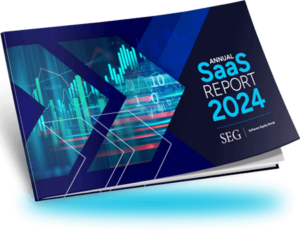
- Tools
Featured Resource
WHITEPAPER20 Factors to Track When Valuing Your
SaaS Company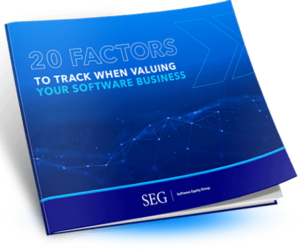
- Blog
SEG Panel: Expert Private Equity Perspectives on B2B SaaS Investing
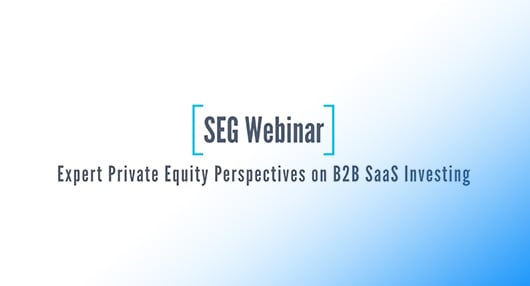
Private equity has been a driving force behind software and SaaS M&A activity in recent years. With record investable cash, private equity firms are actively competing with, and often outpacing, strategic buyers for best of breed software investments / acquisitions.
If your SaaS company is considering an exit event, there is a high likelihood of private equity investment in the transaction. So what are the key metrics that private equity investors focus on? What is their perspective on the Rule of 40? How do private equity investors partner with entrepreneurs post-transaction?
SEG recently hosted a panel discussion with leading private equity firms Accel-KKR, Battery Ventures, Resurgens Technology Partners, and The Riverside Company to get their perspectives on investing in B2B SaaS companies. Collectively, these firms have helped shape today’s software landscape, accounting for over one thousand investments in the B2B software and SaaS segments.
Speakers Included:
- Adi Filipovic, Principal & Co-Founder, Resurgens Technology Partners
- Chelsea Stoner, General Partner, Battery Ventures
- Jeremy Holland, Managing Partner, The Riverside Company
- Phil Cunningham, Operating Executive, Accel-KKR
- Moderated by: Kris Beible, Vice President, Software Equity Group
These experts shared the private equity perspective on:
- Which customer retention metric is most important
- How addressable market size and customer concentration impact investment consideration
- Which metrics entrepreneurs should be measuring in their sales and marketing pipeline
- How to measure the effectiveness of product and development teams
- How private equity investors weigh the Rule of 40 and profitability vs. retention
- Why is rolling equity an attractive option for founders and operators
- What entrepreneurs can expect post-transaction
- How COVID-19 has impacted the investment process
Below we summarize some of the key questions and answers from our panel:
Q: When considering what data and metrics SaaS companies should be tracking, retention is important for benchmarking. Is one retention metric more important than any other?
Chelsea Stoner: I view gross, lost, and logo retention as very good signals for strong product market fit, given growth is the single biggest driver of valuation. Having good retention provides a stable base from which to compound growth. If there is high logo churn, look at ‘the why’. If a customer was oversold, maybe it’s a sales problem not a product market fit problem or implementation failed. Understanding churn on a more granular level is also important. Once a customer is using the product, how long do they stay on? This matters for customer lifetime value. Oftentimes our investment thesis includes a route to upsell and increase wallet share over time. And so we fundamentally focus on gross and logo retention.
Phil Cunningham: With logo, net retention can hide some things because it is including upsell, downsell, and pricing changes, etc. For about 80% of the metrics we talk about today, we’re looking for the trend in these data points. Data at a point in time is interesting, but what’s happened over the last period of time, whether you want to look at quarters or years, is also important. With net retention, we set a benchmark at a 100% or better. This means that with churn, including upsell, downsell, and pricing changes; you are maintaining your period-over-period or year-over-year revenue. If you’re below that, you’ve got a leak in the bucket. It doesn’t mean that we would walk away from a deal that’s less than 100%, and it doesn’t mean that you have bad retention. It’s a benchmark we start with.
Q: What are some of the specific metrics that entrepreneurs should be measuring in their sales and marketing funnel or pipeline?
Phil Cunningham: Sales and marketing is usually one of the easier areas of the business to track and trend metrics because you have quota carriers, marketing spend, and win-loss ratios. These help to understand how efficient and effective the sales team is, as well as any underlying challenges with product. We dig into bookings by type – annual contract value versus one time, or recurring revenue by product. For salesforce productivity, look at over or under performers and trends over time. The turnover of a sales team and overall productivity is another metric that we like to dig into.
Three critical metrics that most of us would agree on are customer acquisition cost (CAC), which is a measurement of your spend versus bookings; lifetime value (LTV), so you’re adding the element of how long or what your retention is; and sales efficiency, which is your new and upsell bookings divided by your total sales and marketing spend.
Q: What are the top two metrics every entrepreneur should be tracking in their business that you often find they are not?
Jeremy Holland: I would take it back to ‘the why’. As opposed to a specific calculation, they’re capturing the data but not the context. For example, it would be hugely valuable if companies track why customers churned. It’s different if the customer went out of business than if they just chose to go to a cheaper competitor. Or say they went to a cheaper competitor, but then they came back two years later. It’s validation that they tried the competitor and it didn’t work out. So if companies took the time to track ‘the why’, I think there would be a tremendous amount of insight into the existing metrics.
Chelsea Stoner: I would agree. Churn reason oftentimes is just not tracked anywhere, but is extremely valuable. Another metric that’s interesting and oftentimes not tracked on the granular basis is monthly or quarterly new versus upsell bookings. It’s pretty simple to start tracking and it’s informative as to what’s going on.
Q: When assessing investment candidates in the context of Rule of 40, do you prefer weighing towards revenue growth or profitability?
Adi Filipovic: I’m starting to frankly be a little bit cynical about Rule of 40 anywhere and everywhere. It’s a good rule of thumb, but it doesn’t tell you how they should be traded off, as it’s not really linear. Ideally speaking, you want to have 20% [EBITDA margins] and 20% [growth], so what does that mean? Software companies scale really nicely, have fixed cost structures, and they’ll be a lot more profitable at the right level of scale. So the smaller the company, the more one should put weight on growth. Ultimately, you want to scale to give yourself a chance to be really profitable.
Q: There are many interesting vertically focused businesses serving niche segments. What factors give you comfort investing in a company with a perceived small total addressable market [TAM]?
Adi Filipovic: Assume it’s a small TAM, is it a valuable segment? A company that has a network effect, where it’s actually costly for a customer not to become a customer of the company, that is the holy grail of owning a market – small or large.
Other things that are important: Is the market stable or is it growing or shrinking? Is there M&A amongst your customer and will you be on the right side or the wrong side of M&A? Do you have the right customers to start out in terms of being on the right side of the acquisitions? How likely is it that you’ll expand the TAM over time organically or inorganically? It’s also important to consider is the cost structure in the current dynamics of your business. Being in a small market, you’re not going to grow your way out of a cost structure problem. Getting to interesting unit economics earlier in the development of a company is important.
Q: Is there a typical framework from which entrepreneurs can expect to operate post transaction?
Jeremy Holland: 20 years ago, you would buy a company and then, post-closing, the first board meeting would literally be “Okay, now what?” All of that has been pulled forward, so now the due diligence process is formulating that 100-day, go forward plan. It includes what needs to be done, which roles entrepreneurs want us to help fill, and whether our sales excellence team can help design a comp plan or hire salespeople. We are going to be that key sounding board to help management get where they want to go. Eventually, you want to get into a rhythm and reporting cadence. We also have a separate group within our operating team that will help establish KPIs and reporting metrics. Many entrepreneurs never had a partner or lender before, so during that process we will bring our team in to help establish that rhythm for them.
Private equity investors are playing an increasingly important role in the funding and valuation of B2B SaaS companies. SEG talks to hundreds of private equity investors and can help assess your business and how it will be perceived by investors and strategic buyers. If your company is seeking liquidity or ready to explore an exit opportunity, contact us to explore the market.

